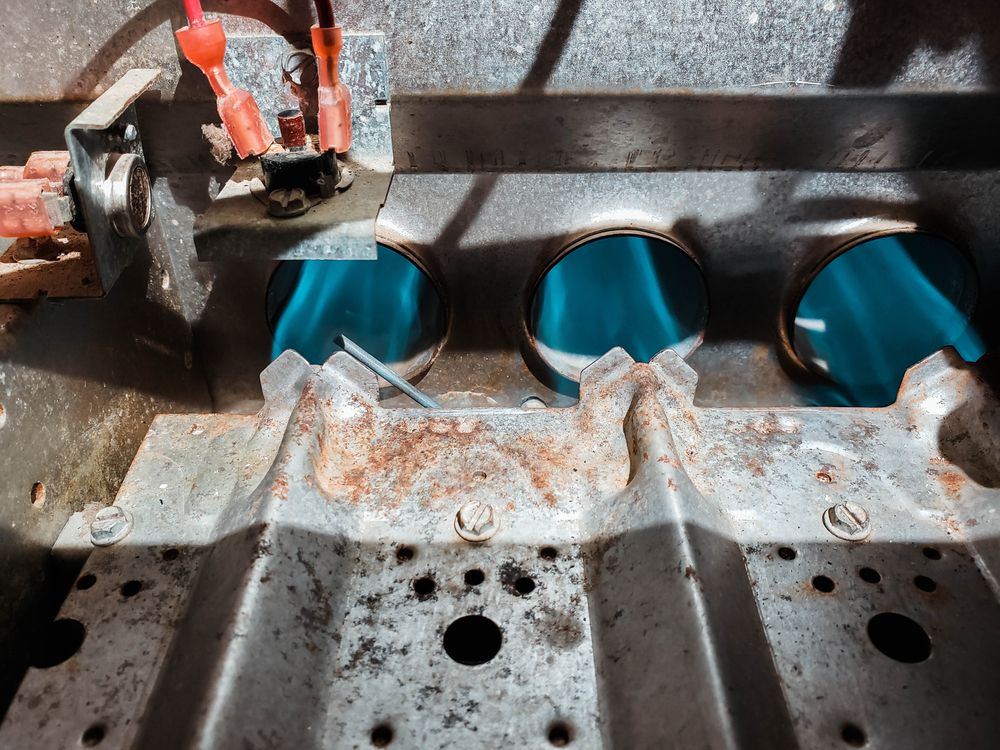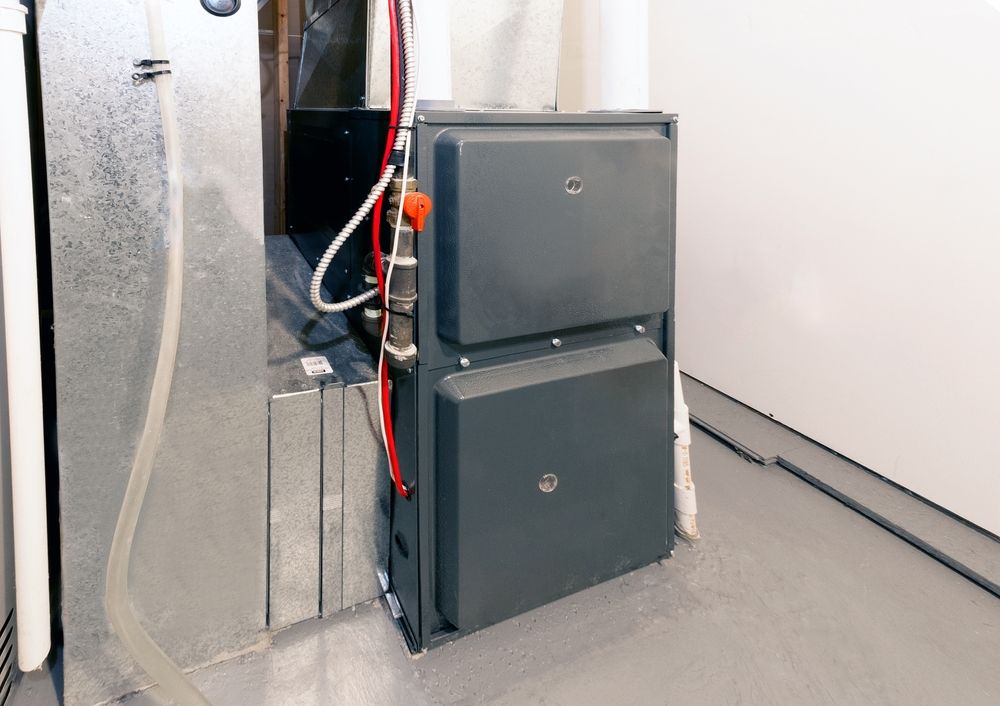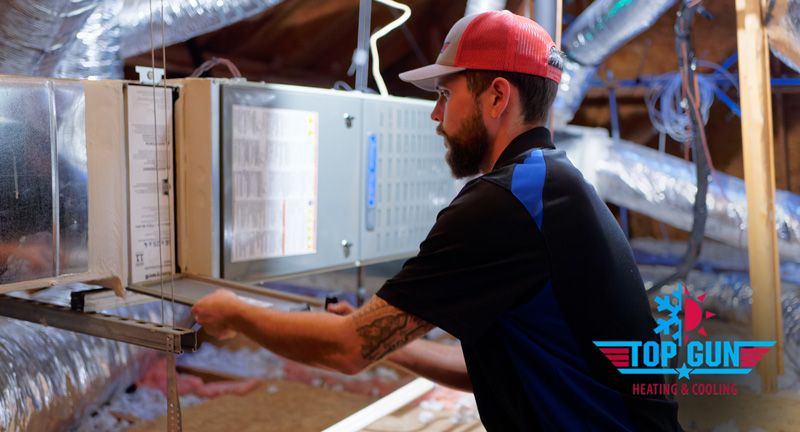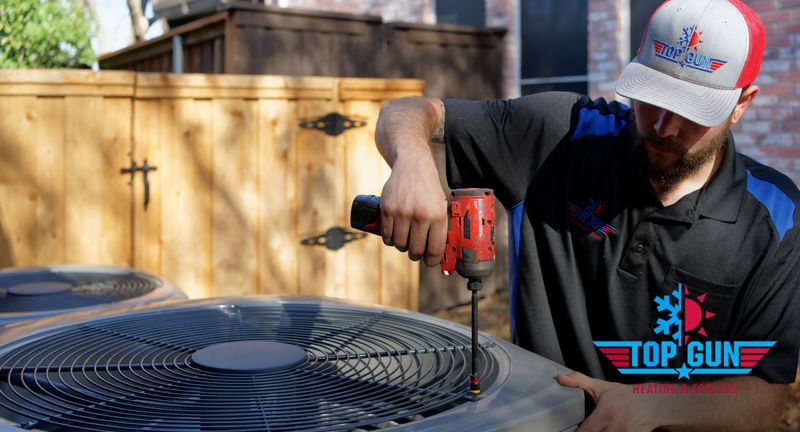How to Maximize Furnace Efficiency in Your Home
An efficient furnace can make a huge difference in your home, saving more than just energy. When you maximize your furnace’s efficiency, you enjoy lower heating bills and a cozy home environment.
An efficient furnace easily converts fuel or electricity into heat, preventing wasted energy and uneven home heating. Wasted energy equals wasted money, so high furnace efficiency is key to lowering costs and stabilizing temperatures.
What Is a High-Efficiency Furnace?
Furnace efficiency is how well a furnace converts a fuel source, like electricity or natural gas, into heat. A high-efficiency furnace will waste little energy in the heating process, while a low-efficiency furnace wastes much more energy. A furnace’s efficiency can be determined by its Annual Fuel Utilization Efficiency (AFUE) rating.
AFUE Ratings
AFUE ratings are on a percentage scale of 0-100%. For example, a 95% AFUE rating means that 95% of energy is used to create heat while 5% is lost as waste.
A high furnace efficiency rating is over 90% AFUE. Standard furnace efficiency is between 80 and 89% AFUE. Any furnace efficiency rating below 80% is low efficiency.
Benefits of a High-Efficiency Furnace
- Lower energy bills
- Reduced environmental impact
- Enhanced home comfort
Factors Affecting Furnace Efficiency
-
Age of the Furnace
Older furnace models will have a lower furnace efficiency rating than newer models. Modern models are designed to waste less energy and heat your home evenly.
However, even high-efficiency furnaces can lose efficiency over time. All furnaces take on wear and tear, resulting in decreased performance.
-
Maintenance
Dirty filters, clogged ducts, and delayed tune-ups can lower your furnace efficiency, resulting in less heating capability, more wasted energy, and broadly uneven heating.
-
Home Insulation and Airflow
If your home has poor insulation or experiences constant drafts, your furnace will have to work harder to spread heat throughout every room. By sealing leaks and maintaining proper airflow, you can restore your furnace’s efficiency, allowing it to operate normally.
-
Size of the Furnace
During furnace replacement or installation, it is critical that an experienced team properly sizes your unit. An oversized or undersized furnace will run inefficiently, constantly cycling or making loud noises.
-
Fuel Source
Your furnace’s fuel source largely affects its efficiency and cost. Generally, natural gas furnaces will be the most efficient and least costly. Electric furnaces are close behind, with some units occasionally being more efficient than their natural gas counterparts.
An electric furnace technically has an AFUE of 100%, but it will often cost more to run than a natural gas furnace and doesn’t necessarily use less energy. Oil furnaces are usually less efficient than natural gas and electric, having a typical max AFUE of 90%.
Tips for Maximizing Furnace Efficiency
-
Regular Maintenance
Annual professional inspections and tune-ups will keep your furnace efficient for years to come. Licensed furnace repair professionals can find any significant issues with your furnace and fix them before they become disastrous.
You can prevent efficiency issues yourself by cleaning or replacing your air filters every 1 to 3 months.
-
Upgrade Your Thermostat
Modern thermostats are designed to maximize furnace efficiency and lower your energy bills. A programmable or smart thermostat can heat your home on a schedule, lowering energy waste.
-
Improve Home Insulation
A critical step in how to maximize furnace efficiency is properly sealing windows and doors. If your home struggles with heat loss, you may want to consider installing attic or wall insulation.
-
Consider Upgrading to a High-Efficiency Furnace
If you have an older furnace (generally around 15 years old), your unit may struggle to evenly heat your home. Older units have to work harder and use more energy, which can increase your bills and bring unwanted noises inside.
A new, high-efficiency furnace won’t make an older unit’s clunking sounds. But that’s just one pro in a list of many. A new unit often comes with:
- Generous rebates
- Tax credits
- Lower energy bills
- More heating power
- Even heat distribution
-
Optimize Ductwork
Clean and properly sealed ducts will let air flow throughout the house without interruption. Be sure to address any leaks as they come. Faulty air ducts can result in high energy bills and uneven heating.
-
Adjust Furnace Settings
When you are out of the house or asleep, lower the temperature to maintain high efficiency and prevent energy waste. You can also use “AUTO” mode instead of “ON” for the fan. These small changes will prevent more wear and tear in the long run.
Common Furnace Efficiency Myths
-
Turning Off the Furnace Saves Energy
Turning off your lights before bed saves energy. Turning off your TV when you leave home saves energy. But your furnace doesn’t work that way. Short-term shutoffs can increase your furnace’s energy use because furnaces require more power when restarting.
-
Closing Vents in Unused Rooms Improves Efficiency
When you close vents, you may accidentally create pressure imbalances throughout your home. These imbalances will make your furnace work harder, resulting in higher energy use and lower efficiency.
-
High-Efficiency Furnaces Always Save Money
A high-efficiency furnace must be properly installed and sized to give you the savings you deserve. When you have the wrong unit for your home, you can suffer from inefficient heating and high costs. So, be sure to hire trusted furnace replacement and installation specialists when it’s time for a new furnace.
Contact Top Gun Heating & Air For Heating Maintenance and Repair
If you’re wondering how to maximize furnace efficiency, pay attention to three items: your furnace’s AFUE rating, its maintenance needs, and your home size. When you properly understand your furnace, you can easily maximize its efficiency. And maximizing efficiency isn’t just about saving money—it’s about making your home more comfortable and environmentally friendly.
A cozy home starts with proper heating, so take the steps to improve your furnace’s efficiency—whether it’s upgrading your thermostat, scheduling a tune-up, or considering a new high-efficiency model. A furnace isn’t the right choice for everyone: heat pump vs. furnace is a common question, and the answer varies by home.
The right heating system will bring huge savings and years of comfort. Learn your best options by scheduling an appointment with Top Gun Heating & Air’s furnace replacement and installation specialists today.





